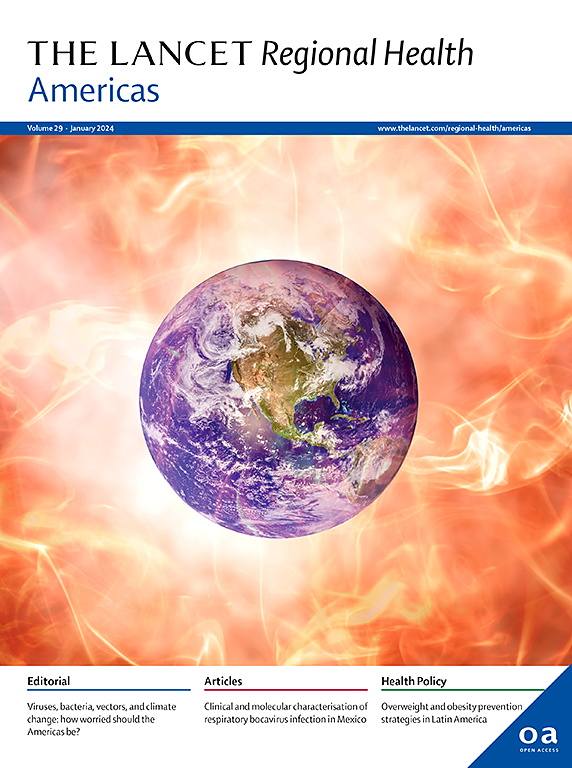A time-series analysis of the use of opioid medications in a network of Brazilian hospitals, 2009–2020
IF 7
Q1 HEALTH CARE SCIENCES & SERVICES
引用次数: 0
Abstract
Background
To date, no studies in Brazil have described the profile of hospital opioid use. This study aimed to describe the temporal evolution of opioid consumption in hospitalised patients in a Brazilian hospital network.
Methods
This study describes a 12-year time-series (2009–2020) of hospital use of opioids in 28 hospitals of a private network in Brazil. More than four million prescriptions were analyzed using the Joinpoint Regression Program.
Findings
Parenteral tramadol was the most consumed opioid, followed by parenteral fentanyl and parenteral morphine. Among enteral opioids, the most commonly used was codeine followed by tramadol. There were several variations in the use patterns for most medications, with periods of significant increases and decreases, but two opioids underwent considerable change: parenteral fentanyl, which doubled in consumption, especially during the COVID-19 pandemic, and enteral tramadol, which had a fourfold reduction over time. Enteral oxycodone, the pivot of the opioid crisis in the USA, was relatively little used in this series. Methadone, both parenteral and enteral, was seldom used at the hospitals under analysis, an indicator of a mild use of other opioids, before and/or during hospitalisation.
Interpretation
Knowledge and documentation of the utilisation profile of this class of medication is relevant, given the concern that any increase in consumption at any point in the chain, including during hospitalisations, may trigger events of increased outpatient opioid use and potential misuse.
Funding
Carlos Chagas Filho Foundation for Research Support in the State of Rio de Janeiro (FAPERJ, grant E-26/010.002428/2019) and IDOR Department of Pediatrics, Rio de Janeiro, RJ, Brazil.
2009-2020年巴西医院网络阿片类药物使用的时间序列分析
迄今为止,巴西还没有研究描述医院阿片类药物使用情况。本研究旨在描述在巴西医院网络住院患者阿片类药物消费的时间演变。方法本研究描述了巴西一家私人网络的28家医院的12年时间序列(2009-2020)阿片类药物的医院使用情况。使用Joinpoint回归程序分析了400多万张处方。发现静脉注射曲马多是使用最多的阿片类药物,其次是芬太尼和吗啡。在肠内阿片类药物中,最常用的是可待因,其次是曲马多。大多数药物的使用模式有几种变化,有显著增加和减少的时期,但有两种阿片类药物发生了相当大的变化:肠外芬太尼的消费量增加了一倍,特别是在COVID-19大流行期间,肠内曲马多的消费量随着时间的推移减少了四倍。肠内羟考酮是美国阿片类药物危机的枢纽,在本系列中使用相对较少。所分析的医院很少使用外注射和内注射的美沙酮,这是住院前和/或住院期间轻度使用其他阿片类药物的一个指标。这类药物的使用情况的知识和文件是相关的,因为考虑到在链的任何点,包括住院期间,消费的任何增加都可能引发门诊阿片类药物使用和潜在滥用的增加。巴西里约热内卢州carlos Chagas Filho研究支持基金会(FAPERJ,拨款E-26/010.002428/2019)和巴西RJ州巴西里约热内卢州IDOR儿科。
本文章由计算机程序翻译,如有差异,请以英文原文为准。
求助全文
约1分钟内获得全文
求助全文
来源期刊

Lancet Regional Health-Americas
Multiple-
CiteScore
8.00
自引率
0.00%
发文量
0
期刊介绍:
The Lancet Regional Health – Americas, an open-access journal, contributes to The Lancet's global initiative by focusing on health-care quality and access in the Americas. It aims to advance clinical practice and health policy in the region, promoting better health outcomes. The journal publishes high-quality original research advocating change or shedding light on clinical practice and health policy. It welcomes submissions on various regional health topics, including infectious diseases, non-communicable diseases, child and adolescent health, maternal and reproductive health, emergency care, health policy, and health equity.
 求助内容:
求助内容: 应助结果提醒方式:
应助结果提醒方式:


